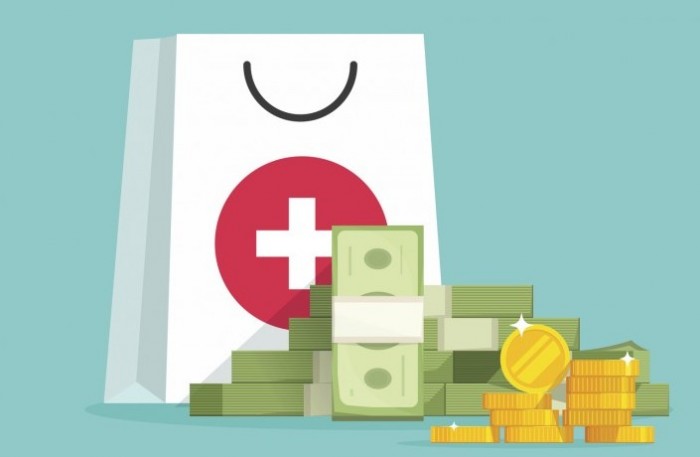How to Improve Cost Sharing to Enhance Chronic Disease Management
Payers may need to re-evaluate patient assistance programs and one-size-fits-all cost sharing to ensure beneficiaries can meet their financial obligations.

Source: Thinkstock
- A tailored cost sharing program that helps beneficiaries pay for chronic disease care can reduce wasteful spending and increase access to chronic disease management services. However, relying on one-size-fits all cost-sharing plans can make it difficult for patients to access the preventive services they need to avoid costly acute events down the line.
One-size-fits-all cost sharing, or fixed copay rates for medications and services, can limit quality and increase unnecessary spending for payers, says Mark Fendrick, the Director of the Center for Value-Based Insurance Design (V-BID) at the University of Michigan.
“While I support the idea of consumers paying their fair share, a substantial majority of public and private payers design cost sharing in a one-size-fits-all way,” Fendrick said.
“The fact is that many patients are being asked to pay more than they are able to afford for necessary medications or the healthcare services they actually need.”
Currently, the Affordable Care Act requires payers to cover a list of preventive services for patients, such as health counseling and some chronic disease screenings. But Fendrick points out that the law doesn’t require payers to cover or subsidize some of the most critical chronic care benefits for beneficiaries.
READ MORE: How Payer Philanthropy Can Address Social Determinants of Health
“The healthcare industry and national healthcare policy have made great headway with primary prevention,” Fendrick explained. “Over 150 million Americans now have expanded no-cost access to many high value primary preventative services.”
“Unfortunately, the ACA does not extend to chronic disease care services such as an eye exam or A1c test for a diabetic, a blood pressure cuff for someone with hypertension, a spirometer for people with asthma, or a CD4 count for HIV.”

Unstructured, non-targeted cost sharing can create both spending and quality of care concerns.
Fendrick explained that beneficiaries may end up experiencing financial burdens if they are paying significant sums for high-frequency services. Unaffordable one-size-fits-all cost sharing totals may also inflate payer costs, he added. Patients that are unable to purchase preventive services or medications could develop more expensive, more severe conditions in the near future.
Some payers try to compensate for high cost-sharing amounts by offering patient assistance programs. By partnering with a philanthropic organization, pharmaceutical company, or other entity to offer coupons or credits, payers can reduce out-of-pocket costs for struggling beneficiaries.
READ MORE: Using a Commercial Shared Savings Program to Reduce Care Costs
Commercial payers including Aetna and Humana offer coupons or pay assistance programs for beneficiaries’ prescriptions. Charities such as the PAN organization help patients afford copays and out-of-pocket costs for chronic disease services and medications.
However, Fendrick cautions that patient assistance programs sometimes fall short of the mark.
Many patient assistance programs are limited in scope or duration, leaving patients to navigate the fine print on their own. Others only offer partial coverage, which may still force patients to pay a significant sum for medications that are required to help them maintain their health status or treat a disease.
“There are increasing situations where patients are being asked to fill prescriptions, or undergo procedures for clinically indicated services, but do not have the funds to afford out-of-pocket commitments,” Fendrick said.
“Patients have turned increasingly to third-party sources to pay for prescriptions, but I'd rather have my patients access a reliable source of funds than rely on a bake sale or start a Kickstarter campaign to get a drug that was specifically designed to treat a patient's cancer.”
READ MORE: How Payers Can Succeed Under Updated 2019 HEDIS Measures
A precision patient assistance program (PPA) may help payers address these concerns.
A PPA specifically helps patients afford cost sharing or copay requirements for services that are clinically appropriate for the patient, based on the patient’s health status and chronic conditions.
For example, a PPA could rely on a payer-manufacturer partnership to increase affordability of a patient’s medications by offering a coupon, substituting generic alternatives for brand medications when appropriate, and providing educational resources about the benefits of medication adherence.
Precision patient assistance and specialized cost sharing programs can not only improve access to treatments, but they could also help payers lower their costs.
Payers need to first identify ineffective patient assistance programs. Abandoning the use of copay cards that don’t leverage generic drugs should be on the list of action items, says Fendrick.
“Payers want to reduce the use of wasteful or inefficient services,” Fendrick explained. “Keeping an individual on a much more expensive agent, for which there is a chemically identical and lower cost alternative, is a use of patient assistance that does not reduce wasteful and inefficient utilization.”
Fendrick added that payers shouldn’t have to worry about higher spending if prescription drugs and chronic care services become more affordable to beneficiaries.
“Several V-BID academic evaluations show that when you make people pay less for high value drugs, they buy them more often,” he pointed out.
“When patients buy high value drugs more often, total healthcare costs don't go up,” he added. “This is because there is an offset in things that would systematically decrease such as expensive emergency room visits and hospitalization.”
Payers that are interested in launching precision patient assistance programs, or similar tailored cost sharing efforts, need to work with pharmaceutical manufacturers to design valuable options for all parties.
Fendrick emphasized that payer-manufacturer partnerships can encourage medication adherence and create cost-saving patient outcomes.
“The healthcare business is not just driven by saving money,” Fendrick said. “It's also driven by improving health. Payers should want patients to receive services that are clinically indicated. If the two key players, the payers and the manufacturers, decide to limit the use of patient assistance programs only for clinically indicated treatments, that's when a precision assistance program could grow and scale.”
Payers must ensure that providers and manufacturers on the same page in both alleviating beneficiaries’ care costs and connecting patients to the right healthcare services.
“If a health system, if a payer group, or if an alternative payment model is trying to convince providers to do more of something, they must look at how current actions can help patients make sure it is easy, not hard, to get their necessary services,” Fendrick concluded.
“As the industry moves from volume to value, as payers start paying clinicians and health systems from doing more of the right thing and less of the wrong thing, it is critically important to make sure patients are included in this movement away from fee-for-service towards value.”
